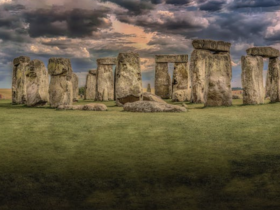Tea has been synonymous with India for centuries, with most of its population enjoying the beverage regularly throughout the day, and recipes for authentic chai being perfected and served by street vendors (chai wallahs) all over the country. But with a growing number of coffee shops opening up throughout India – including Starbucks, which opened its first Indian outlet in 2012 – is chai starting to lose its appeal in favour of shiny new alternatives?
Exact chai recipes vary between vendors, but they almost always include tea leaves, water, milk, fresh ginger, cardamom pods, cinnamon and sugar. Many vendors serving chai on the streets of India’s bustling cities have been doing so for years, and the drink has become part of the country’s very foundations.
The first signs of change in India’s drinking tastes was with the opening of the first Café Coffee Day (CCD) in 1996. With more than 1,200 stores across India, and a new one opening each week – along with the likes of Lavazza and Costa – it seems that the people of India are getting a taste for lattes, mochas and espressos that are served here.
Some people, however, are simply taking advantage of having somewhere to hang out after work or socialise during the day. Rather than drinking their chai on the street, they can while away the hours in comfort in these coffee shops. This is transforming the way young people interact with each other, particularly as there is a very limited bar culture in India as alcohol is still taboo in many areas.

In south India, coffee has been an important part of their culture long before the big chains arrived; in fact, many families drink more of it than tea, but it’s usually drunk at home. South Indian coffee (kapi) is made with boiled milk and a generous amount of sugar, providing a sweet caffeine hit that’s great in the morning.
For many, the prices of drinks in these national and international coffee chains are unjustifiable when a traditional cup of chai costs only a few pence. This price barrier pushes out much of the Indian population and makes it a reserve for only the upper middle classes.
What’s more, tea shows no signs of waning in popularity; in fact, in the last 15 years tea consumption in India has risen from 562,000 tonnes per year to 837,000 tonnes per year. This could be even higher though, as the average person in India enjoys an average of 250 cups each year – well below international standards, with the average Irish citizen drinking an impressive 1,000 cups annually.
It’s also unlikely that the people of India will want to sacrifice the health-giving properties of tea anytime soon. As well as being hydrating and a powerful antioxidant, studies have connected tea-drinking with a reduced risk of heart attack, the combat of free radicals, and even protection from UV rays.
The best fine-dining Indian restaurants in London have a range of authentic Indian beverages on their menus, from lassis to the infamous chai – why not pay a visit and see if you think it beats a grande cappuccino?
























